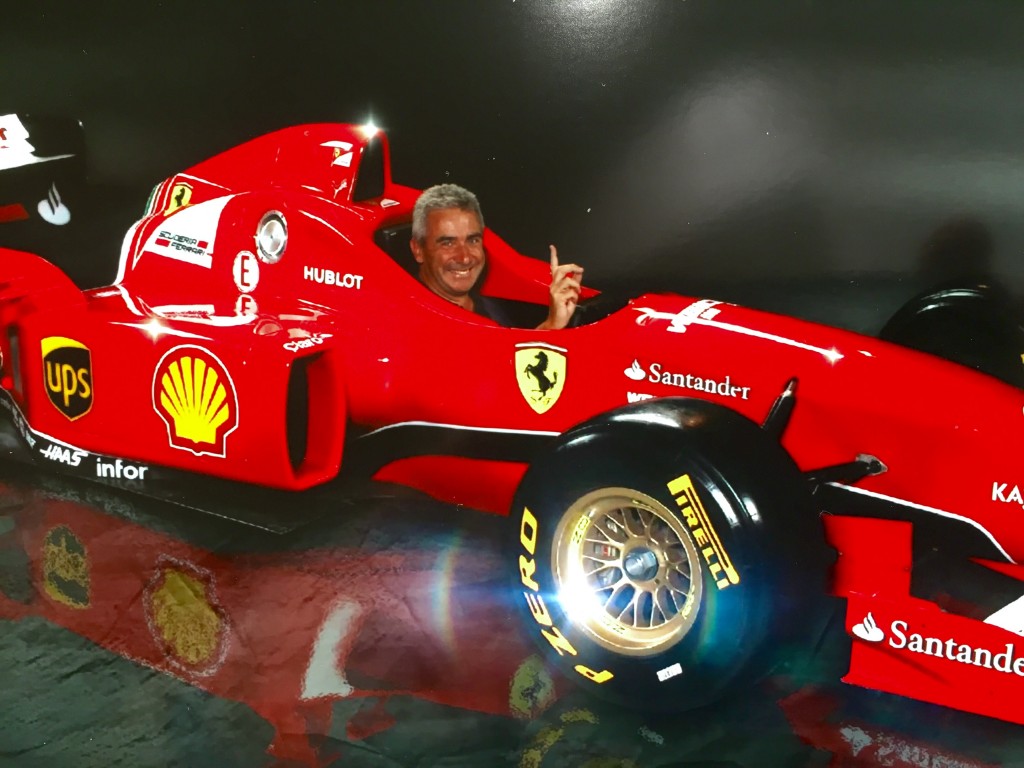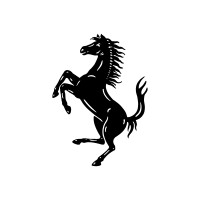Ferrari
Italian excellence that makes the world dream.
Maranello, Italy, the home of Ferrari is certainly a place of extremes. The roar of over-tuned engines, and blur of de rigour red sports cars, seem at odds with the tranquil countryside. Enzo Ferrari always called his factory an innovation lab, always looking to push the boundaries. He described “extreme technology, beauty of design, and the emotion of driving” as the three enduring keys of the Ferrari brand.
A passion for speed
When Ferrari was founded in 1929, it began as a racing team. Enzo Ferrari, the visionary behind the brand, set up Scuderia Ferrari in Modena to sponsor amateur racing drivers. The team purchased, prepared, and fielded racing cars, quickly becoming Alfa Romeo’s technical-racing outpost. However, in 1938, Alfa Romeo brought its racing operations in-house, leading Enzo Ferrari to leave the company. As part of his agreement, he promised not to use the Ferrari name for four years.
During World War II, Ferrari manufactured aircraft parts and other technical products. The factory moved to Maranello in 1943 but was bombed in 1944 and not rebuilt until 1946. In 1947, Ferrari produced its first road-going car, the 125S model with a 1.5-liter V12 engine. The aim was to use the proceeds to support Enzo’s racing team. Soon, road cars became popular, especially due to collaborations with design companies like Pininfarina, Bertone, Ghia, and Touring.
Heritage and luxury
Ferrari’s strategy of producing and distributing vehicles in extremely limited quantities created a unique relationship where end-user demand became a function of supply. Extensive waiting lists and long lead-time delivery schedules made Ferrari cars highly sought after.
Ferrari’s racing DNA remained at the core of its brand. The company’s success on the track translated into desirability for its road cars. The Scuderia Ferrari Formula 1 team continued to be a powerful marketing tool, reinforcing the brand’s performance image.
Ferrari kept almost all production in-house, bringing in suppliers only for elements it could not produce in its factories. This control over manufacturing quality and processes contributed to the brand’s reputation for excellence.
Collaborations with renowned design firms resulted in iconic bodywork for Ferrari cars. The combination of performance and aesthetics made Ferraris a cult car among young multimillionaires.
Exclusivity and Profitability
Ferrari is a great example of leveraging scarcity to enhance pricing power. The brand is synonymous with luxury, performance, and exclusivity, factors that are meticulously maintained through strategic production limitations and marketing.
Thus, when a business model focuses on scarcity and desirability, adopting a ‘less is more’ approach can be highly effective as in the case of Ferrari. For instance, in 2023, Volvo sold approximately 52 times as many vehicles as Ferrari, with sales of 709,000 units compared to Ferrari’s 13,700 units. When it comes to revenue, Volvo Cars generated about €35.3 billion, which is roughly six times more than Ferrari’s €6 billion.
Interestingly, despite the significant difference in scale, Volvo Cars generated “only” €1.8 billion in operating income, accounting for 5% of its revenue. In contrast, Ferrari achieved €1.6 billion in operating income, which represents 27% of its revenue. This comparison highlights how a strategy focused on exclusivity can significantly impact profit margins.
Even when comparing EBIT margin on a wider scale. Ferrari with their 27% (alongside Porsche at 19%) stands out as prime examples of why scarcity matters. The median within the automotive industry for FY2023 was 7.7%.
Ferrari intentionally limits its production to maintain exclusivity and demand for its vehicles. Unlike mass-market automobile manufacturers such as Volvo Cars who strive to sell as many units as possible, Ferrari focuses on selling fewer cars at much higher prices. This strategy ensures that demand consistently outstrips supply, allowing Ferrari to maintain high prices and exceptional profit margins.
Growth beyond cars
With the cheapest model, the 458 Italia starting at $234,000, the sound of that perfectly roaring engine will still be the closest the majority of us will ever get to the Ferrari experience. Which is why brands like Ferrari are looking to innovate in new ways.
The appointment of Benedetto Vigna, a physicist and semiconductor specialist, as Ferrari’s new CEO signals the company’s commitment to innovation and electrification.
Ferrari has embarked on a strategic journey to diversify beyond its iconic sports cars, in particular to explore the worlds of fashion and food:
Ferrari Fashion
Ferrari hosted a fashion show right at its factory in Maranello, Italy, showcasing its renewed clothing line. This event signifies Ferrari’s shift toward an even higher market segment in the fashion industry, targeting a new audience.
The brand has partnered with Armani for fashion product line development. Former Armani Head Designer, Rocco Iannone, now serves as the Brand Diversification Creative Director at Ferrari.
Interestingly, Ferrari plans to release its fashion collections in a unique way. Instead of following the traditional fashion house model, they will adopt a strategy similar to brands like Supreme and Kanye West’s Yeezy. Ferrari will release collections in ‘drops,’ offering a limited quantity of products with a relatively short advance notice.
Ferrari Food
Ferrari is reviving the iconic ‘Il Cavallino’ restaurant in Maranello. The restaurant will be led by Michelin-starred chef Massimo Bottura. This move extends Ferrari’s reach into the culinary world, catering to a diverse clientele.

